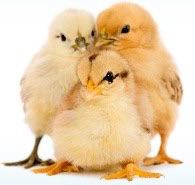FOLLOW






FISH



CHOOSE VEGAN is funded entirely by public donations. Animals depend on your generosity to continue vital work to expose and end animal abuse. Thank you for helping to free animals from cruelty.
FISH
Fishing and fish farming
Today it is rarely disputed that fish feel pain, in fact evidence suggests that fish feel pain, fear and psychological stress and have the capacity to suffer.
Not only is fishing cruel but our demand for fish is unsustainable, with many fish stocks on the verge of collapse.
Omega 3 fatty acids found in fish can easily be gained from plant based sources.By switching to a plant based diet you are saying NO to cruelty and giving the worlds oceans and waterways a chance to recover.
Factory fish farms
Some argue that the only way to meet the future demand for fish is to farm them. Fish farming (aquaculture) is now the worlds fastest growing food production industry, growing at nearly 9% a year since 1970. Both marine and freshwater fish are farmed.In 2006, 47% of the worlds food supply of fish came from farmed fish.
In salmon farms 50,000 to 75,000 fish can be crowded together in a single underwater cage, resulting in each 75cm long salmon having the equivalent of a bathtub of water to swim in. Trout are usually stocked at even higher densities (as many as 27 trout to one bathtub). The stress caused by these unnatural conditions (a wild salmon will swim thousands of miles to return to its spawning ground) leads to physical injuries and increased susceptibility to disease.Official figures show that mortality rates among farmed fish are high, 20% of fish may die before they are harvested.
State of the oceans
80% of the worlds fish stocks are either fully or over exploited. In 2006 around 82 million tonnes of fish were caught from the oceans, with a further 10 million tonnes caught from inland waters. The Food and Agriculture Organization of the United Nations (FAO) projects an increase in fish consumption of 40 million tonnes by 2030. A four year study published in the journal Science projects the collapse of all fish stocks by the year 2048.
In addition to dwindling fish stocks, the biodiversity of the oceans are being lost too. Coral reefs, the rainforests of the sea, are dying at an unprecedented rate, averaging a loss of 600 square miles per year, (or 1% of the total), since the late1960s. Tropical and subtropical coastal mangrove systems, vital for healthy coral reefs, are being felled and converted to ponds for prawns and shrimps destined for the Western market.20% of the worlds mangrove systems have been lost since 1980.
AROUND
82 MILLION TONNES OF FISH WERE CAUGHT FROM THE OCEANS AND
10 MILLION TONNES
FROM INLAND


Requirements for omega 3 fatty acids can be met by just a teaspoon of flaxseed oil or one heaped tablespoon of ground flaxseed, or 1 tablespoon of hempseed oil or 2 tablespoons of rapeseed oil a day.

Suffocation in air
Slaughter methods include clubbing, suffocation in air or on ice, percussion stunning or carbon dioxide stunning. Whichever method is used their gills are then cut to enable the fish to - bleed out.






ABOUT US
MEDIA
CONNECT
SUPPORT
Choose Vegan
the voice for animals
CONTACT



Disease
Parasites and disease are common problems for intensively farmed fish. The large concentrations of fish in fish farms attract sea lice, often causing such severe damage to the fish that the skull becomes visible, a condition known as - death crown -. Other diseases that affect farmed fish include bacterial kidney disease, furunculosis, infectious haematopoietic necrosis and kudoa (soft-flesh syndrome). Antibiotics are administered in an attempt to keep disease at bay. The widespread use of antibiotics in aquaculture has led to several strains of antibiotic resistant bacteria.11Diseases from farmed fish spread to nearby fish populations resulting in increased mortality in wild fish.

Do fish feel pain?
See the truth

Like Choose Vegan on Facebook:
Slaughter
In fish farms fish may be starved for up to two weeks before slaughter to empty the gut and reduce the risk of their flesh becoming contaminated during the gutting process.Slaughter methods include clubbing, suffocation in air or on ice, percussion stunning or carbon dioxide stunning. Whichever method is used their gills are then cut to enable the fish to -bleed out-.
The European Food Safety Authority stated in their 2004 report that many existing commercial killing methods expose fish to substantial suffering over a long period of time.
It is not only the fish themselves that suffer. Every year thousands of fish-eating species, including birds and seals, are shot by fishermen and fish farmers.3000-5000 seals are legally shot in Scotland by fishermen and licences are issued for the shooting of cormorants. 100,000 albatrosses are killed on longline fishing hooks every year.
Unsustainability
Not only is the farming of fish cruel, it is also very inefficient, since wild fish are often caught to feed farmed fish. More than three tonnes of wild-caught fish are needed to produce one tonne of farmed salmon and the conversion ratio for farmed halibut and cod is around 5:1.
Aquaculture operations may employ a range of other unsustainable practices including, sourcing eggs and juveniles from the wild, using GM crops in fish feeds, and increasing water pollution.
The containment of alien species in fish farms cannot be guaranteed.Escapes affect natural fish populations by competing for food and resources or predating on wild populations.







